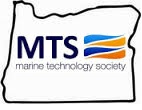Seth McCammon, Oregon State University
Semi-autonomous underwater vehicle (sAUV) based on the Seabotix vLBV-300 observation-class ROV
We have developed a semi-autonomous underwater vehicle (sAUV) based on the Seabotix vLBV-300 observation-class ROV. Our vLBV-300 is augmented with commercially available sensors, including the Greensea INSpect GS3 inertial navigation system, Tritech Gemini multibeam imaging sonar, and a Teledyne Explorer doppler velocity log. These subsystems on the sAUV are integrated with the Robot Operating System (ROS), enabling the visualization of sensor and navigational data in real time from the vehicle. In an offshore trial, we demonstrated the navigational capability of the sAUV, both in station-keeping and waypoint-following tasks. The vehicle was able to complete navigation tasks at a variety of depths, ranging from 10 meters to 45 meters.
Data from the sAUV is communicated to the ground station via a tether, which also provides power to the vehicle. To further expand the vehicle’s autonomy, we have developed a method for planning non-entangling paths in obstacle rich environments. Leveraging homotopy-augmented graphs and a mixed integer programming model, the sAUV can plan the shortest non-entangling path through a set of target points. Combined with the navigational capability of the sAUV, our vehicle eases the control burden of an ROV operator during lengthy undersea operations, such as inspecting offshore energy generation devices. In a set of simulated tests, our method was successful in planning and executing efficient non-entangling paths. We then validated the simulation results on the sAUV in a set of experiments by executing non-entangling paths both in pool tests and in a dock inspection.
